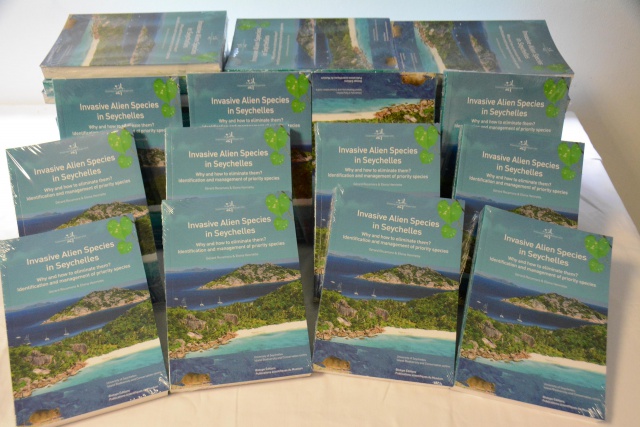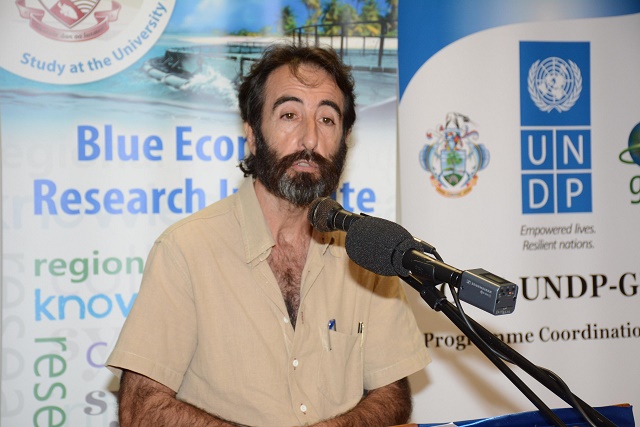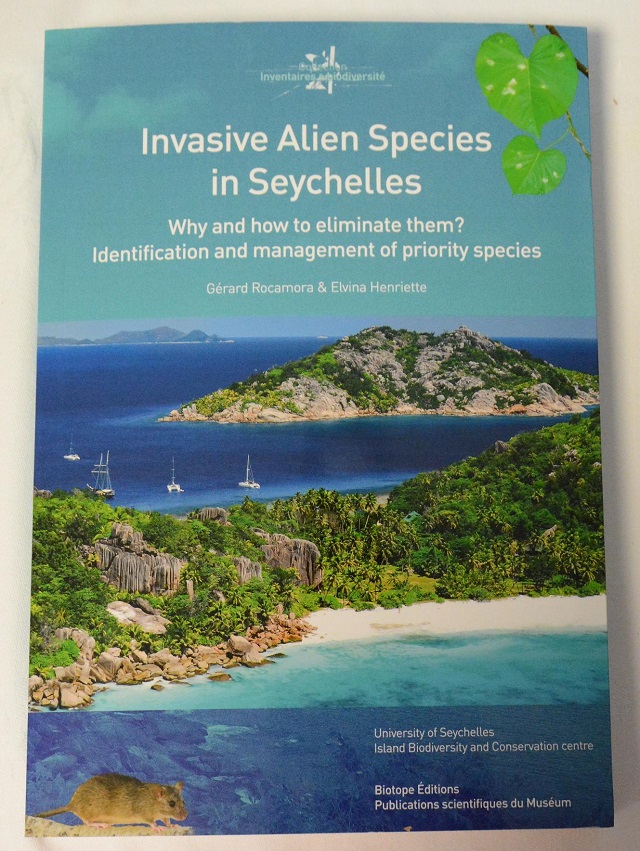Seychelles gets first-of-its-kind book on invasive plants

The book on Invasive Alien Species in Seychelles was launched on Friday. (Joena Bonnelame, Seychelles News Agency)
(Seychelles News Agency) - Years of personal battle with invasive species has led to a first-of-its kind book about invasive plants found on Seychelles’ 115 islands.
It took Seychellois scientists Dr. Elvina Henriette and Dr. Gerard Rocamora four years to complete this thick book about the invaders of the archipelago environment.
‘Invasive Alien Species in Seychelles’ is now available at the University of Seychelles for $38.
“I am one of those persons who have worked a lot with restoration of species and ecosystems. One of the main problems in such restorations is invasive species that destroy these environments. That’s how my interest for invasive species grew,” explains Dr. Elvina Henriette.
The pair started work in 2011. Their book will benefit conservationists, scientists, naturalists and others involved with the protection of the environment.
The project was headed by the Ministry of Environment and was funded by the Global Environment Facility (GEF).
The book explains how to recover threatened species after they are threatened by invasive species. Dr. Henriette tells SNA that it is much easier to eradicate such species on private islands rather than populated islands.
 |
| Elvina Henriette dedicating a book for a reader. (Joena Bonnelame, Seychelles News Agency) Photo License: CC-BY |
“It is much easier to control the reintroduction of the species on small private islands like Fregate Island and Ile du Nord. Containment is the best option for populated areas,” Henriette said.
People unwittingly contribute to the invasive species problem by bringing plants from overseas travel without knowing their impact on the ecosystem.
One species that has had a lasting presence in the Seychelles is cinnamon. The plant was introduced during the colonial era for agricultural purposes but it quickly spread uncontrollably across the western Indian Ocean archipelago.
According to Dr. Henriette such species are much easier to control in national parks or reserves.
“It is important to know that there are some species that can be controlled and others that nothing can be done about.”
 |
| Dr. Gerard Rocamora, one of the co-authors of the book. (Joena Bonnelame, Seychelles News Agency) Photo License: CC-BY |
SNA was keen to know more about the possibility of re-exploiting cinnamon as a means of eliminating it. Dr. Henriette believes that the export value of cinnamon for Seychelles is a thing of the past. India and Sri Lanka produce it more efficiently
Over the years Seychelles has seen the introduction of various invasive species on to its islands, some of which have been successfully eliminated.
“Our most successful eradication project was the eradication of rats on Fregate Island and Ile du Nord. We have also been successful with the eradication of ‘wild goats’ on the Aldabra atoll,” says Dr. Henriette.
“Our most recent eradication is the red whiskered bulbul, locally known as ‘Merl konde’ that was found on Assumption Island, as well as ‘filodendron’ found on Vallee de Mai,” she further explains.
The Seychelles government has taken numerous actions in this regards, namely the bio security policy and training for staff.However, Dr. Henriette feels that the main challenge is the implementation of such efforts.
 |
| It took four years to complete the book on Invasive Alien Species in Seychelles. (Joena Bonnelame, Seychelles News Agency) Photo License: CC-BY |
“A lot of public awareness campaigns have been done, but do people really follow those advices?”
What is the future of Seychelles given the presence of invasive plants and animals?
“This can be looked at in two aspects. For species that can be dealt with we can count on some future successes. Some species if removed at this point can promote the introduction of another species. So the battle is at hand, so we need the willpower to continue the battle, despite it taking us several decades,” Dr. Henriette concludes.





